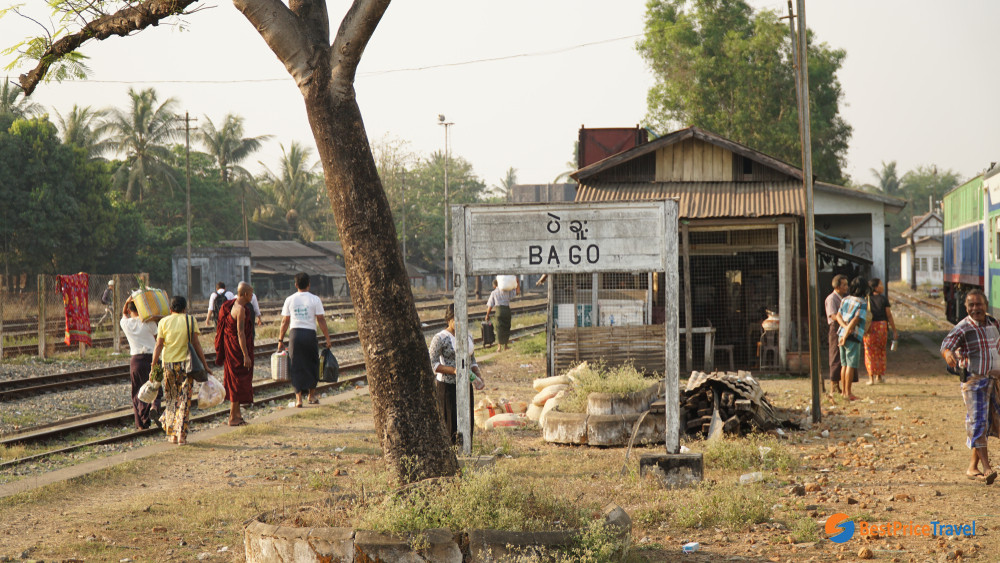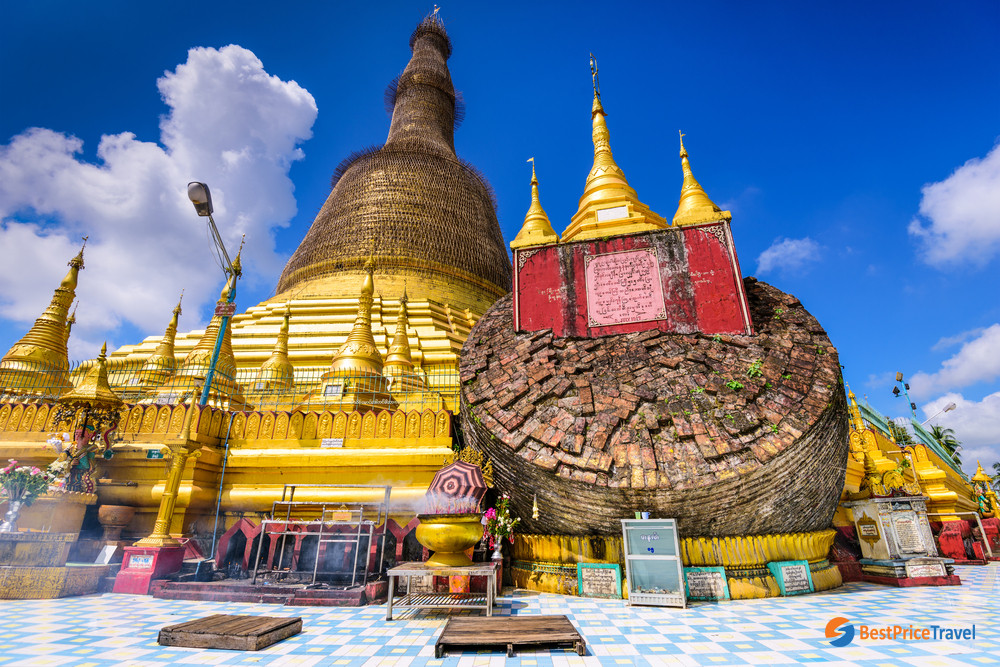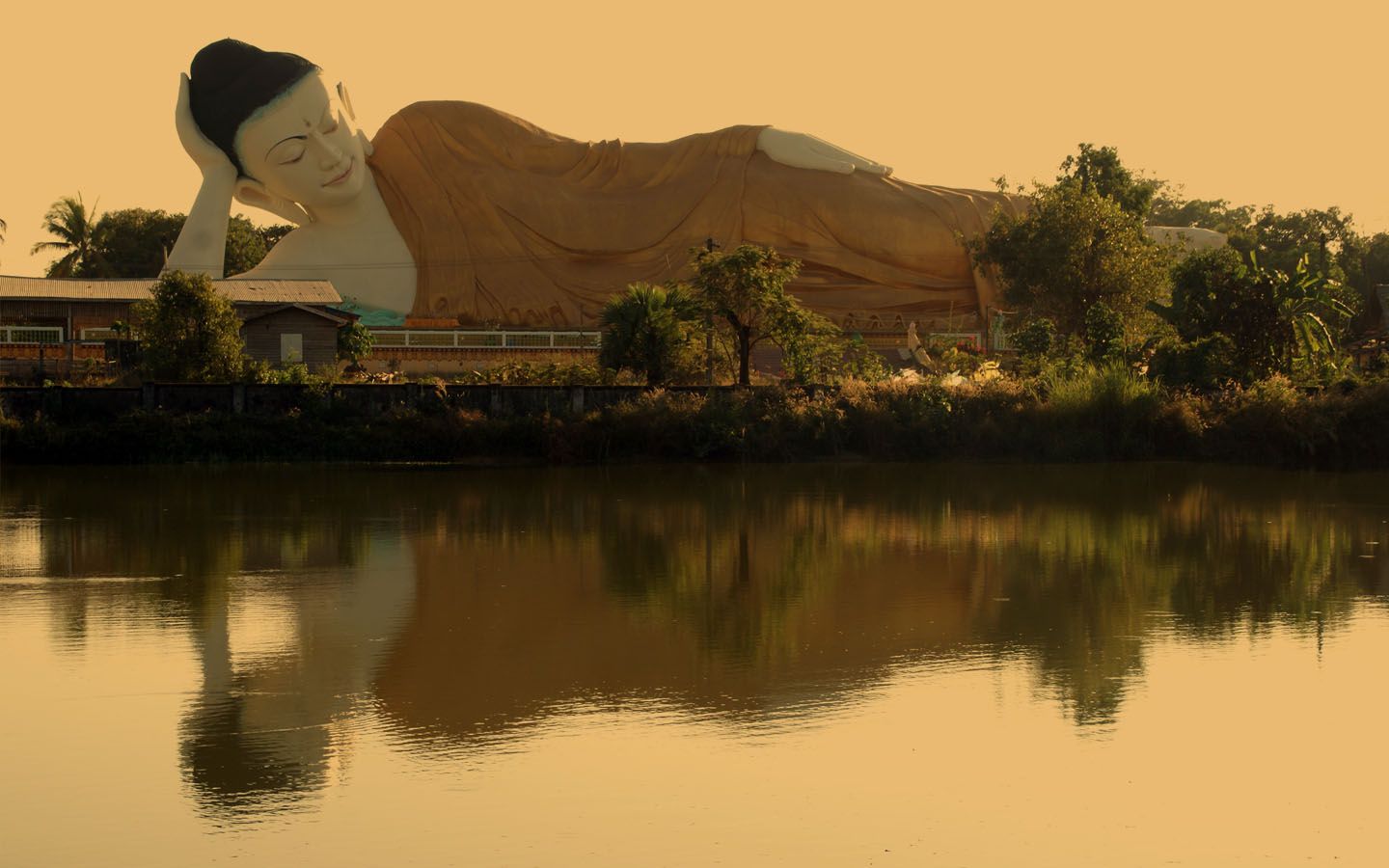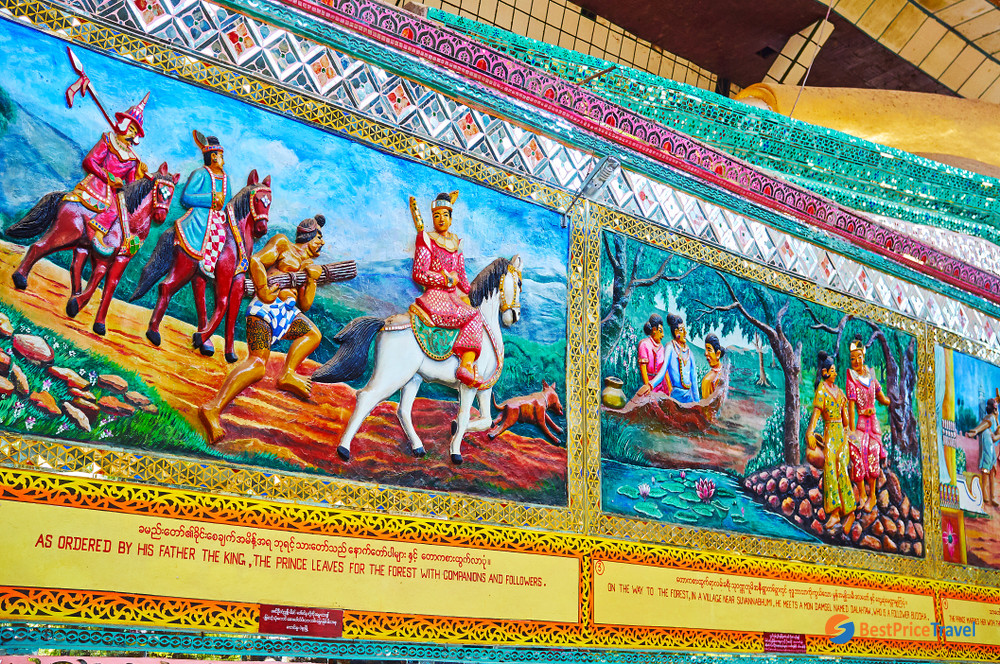Bago Guide - All you need to know
Bago is a town little visited by tourists located about 80 kilometers northeast of Yangon. The town has a long and rich history.
Bago, also known as Pegu or Hanthawaddy, is a city and the capital city of the Bago Region in Southern Myanmar. Located on the Pegu River, 76 km (47 miles) northeast of Yangon (also called Rangoon), Bago is a prominent rice-and timber-producing city that is also famous for its various temples and historical sites.

Bago
Bago is said to have been founded circa. 573 by Mon emigrants from Thaton. It was officially made the capital city of the Mon Kingdom in 825. After the Mons regained independence from the Mongols in 1287, Bago once again served as the country’s capital, an important port, and a prominent Buddhist center.
The history of Bago
A series of wars from 1740 to the 1860s devastated and depopulated the region. After Myanmar fell under British colonialization, Bago was turned into a primary rice-growing and exporting region of the colony. The city slowly regained strength and prominence after independence, however, and is currently the 4th biggest city in Myanmar.
Top recommended attractions in Bago
Shwemawdaw Pagoda: Also known as the “Golden God Temple,” Shwemawdaw is the tallest pagoda in Myanmar, at 114 meters in height. This splendid pagoda was built during the Mon Dynasty. After the stupa was destroyed in a massive earthquake in 1930, it was rebuilt from 1952 to 1954. Tourists will find the pagoda’s architecture and design exceedingly similar, though relatively less impressive, to the famed Shwedagon Pagoda in Yangon.

Shwemawdaw Pagoda
Hintha Gon Pagoda: Situated on a hill behind Shwemawdaw Pagoda, Hintha Gon is another important Buddhist temple in Bago. The pagoda was built by U Kanti, a Burmese monk known for having designed the Mandalay Hill. When visiting Hintha Gon, tourists will get the opportunity to enjoy the breathtaking view of Bago city from atop the hill.
Kyaik Pun Pagoda: This pagoda is located in the southwestern part of Bago city and home to the Four Seated Buddha shrine, a collection of four statues of the Buddha in four seated positions. According to Burmese legends, the statues were built by four Mon sisters, each of whose marriages would lead to the destruction of one of the statues. The 1930’s earthquake destroyed one of them, which was later renovated. The pagoda itself was a historical building, built by King Dhammazedi in 1470.
Mya Tha Lyaung and Shwethalyaung statues: The Mya Tha Lyaung and Shwethalyaung Buddhas are two famous statues that resemble the reclining Buddha on the day of Nirvana. Of the two, Shwethalyaung is the more spectacular. Located in the western part of Bago city, the colossal Shwethalyaung is 181 feet (55 m) long and arguably one of the most lifelike of all the reclining Buddha figures. Believed to have been built in 994, the statue was lost when then-Pegu was destroyed in 1757. It was later rediscovered by a foreigner in one of Myanmar’s jungles in 1881.

Mya Tha Lyaung
Kanbawzathadi Palace and Museum: This historical building complex is a must-visit destination in Bago. Located north of the Shwemawdaw Pagoda, the palace and museum feature spectacular and unique Mon architecture. The museum, in particular, has a unique octagonal shape and contains various collections of Mon artifacts. Visiting Kanbawzathadi Palace and the museum will allow tourists to learn important information about Bago’s history, both as a city and an ancient capital of the Mon Kingdom. Significantly, the palace also served as the residence of King Bayinnaung from 1553 to 1599.
Kalyani Ordination Hall: Finally, tourists will enjoy a visit to Maha Kalyani Sima, a sacred Buddhist hall of ordination, located near the train station of Bago. Kalyani is a prominent pilgrimage site for Theravada Buddhists that houses the Kalyani Inscriptions, a collection of 10 sandstone pillars inscribed with important Buddhist records in Pali and Mon in 1480. After having been destructed numerous times, both by wars and natural disasters, the ordination hall was finally reconstructed in 1954 and continues to remain a sacred Buddhist center until this day.
Bago Culture

The Pedestal Of Reclining Shwethalyaung Buddha
Myanmar is a Buddhist country with many Buddhist temples and religious sites. Tourists should make sure to bring with them appropriate dressing attires, especially when they plan on visiting Bago’s different Buddhist pagodas. For instance, tourists must avoid sleeveless shirts, shorts, skirts, or pants that are shorter than the knee, and should try to wear toes-covered shoes rather than flip-flops when visiting these religious sites. It is important that tourists pay respect to Myanmar’s cultural and religious centers.
Weather in Bago
It is most recommended that tourists visit Bago (and many other cities in Myanmar) during the months of November – mid-March, when the weather is relatively dry, temperate, and more predictable. This dry season is especially essential when tourists plan on performing outdoor activities such as mountain climbing or traveling by boat.
The March-May period is too hot, which may leave tourists severely dehydrated and even suffering from heat strokes. To the contrary, the August-October months are the region’s rainy season, during which heavy rain and severe flooding are most likely to occur. In general, tourists are recommended to always bring with them enough water and either a hat or an umbrella to prevent dehydration and heat strokes. Mosquito repellents may also be useful to avoid the unpleasantness and irritation of mosquito bites.
How to get to Bago
- Tourists can easily reach Bago by bus from Yangon. The journey typically takes two hours. Tickets cost around 2000 kyats and can be purchased from Saw Bwar Gyi Gone bus station in Yangon. This bus station, from which all Bago buses depart is located near the airport, making it convenient for those who fly into Yangon.
- With a new highway recently built between Mandalay and Yangon, daily buses to Bago also become available when departing from Mandalay, Hpa An, Mawlamyine, and Nay Pyi Taw. The costs of tickets for these buses range anywhere from 2,000 kyats to 7,000 kyats depending on the point of departure.
- Another convenient way to travel between Bago and Yangon is by train. A ticket costs around 1,150 kyats. There are three trains a day coming into the Bago Central Station from Yangon. Tourists who travel from Mandalay and other big cities can also travel to Yangon by train and either take a train ride or a bus ride into Bago.

Marharzayde
Transportation in Bago
The city of Bago is small enough to walk around. For more convenience, tourists may choose to bike or travel on shared and/or private motorbike and tuk-tuk rides.
Travel tips
- Bago is a great place for both nature lovers and those who wish to pay homage to Buddhist temples and Burmese cultural and historical sites. These cultural and natural artifacts make wondrous pictures for amateur and professional photographers, as well as casual selfie-takers who seek to capture memorable moments on their adventures in the country of Myanmar.
- Currency: Local currency in Myanmar is the kyat. It is recommended that tourists exchange money while waiting for their baggage at any Burmese airport. While foreign credit cards may be accepted in major hostels, hotels, or restaurants, it is strongly recommended that tourists have readily available cash in hand, both for the sake of convenience and in order to experience the country as local Burmese do.
